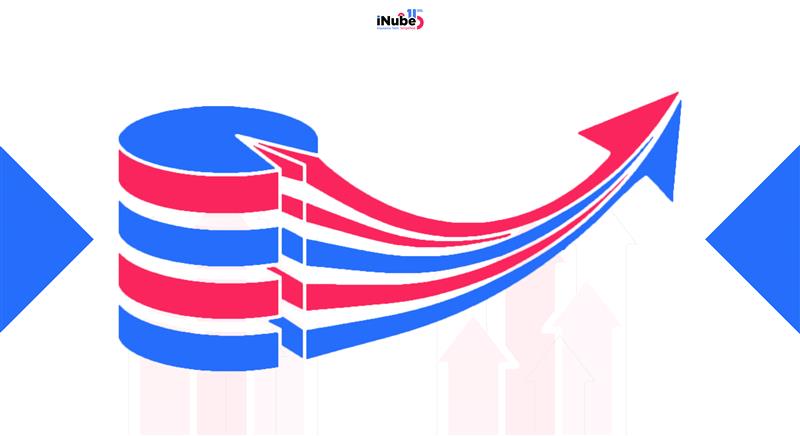The insurance industry stands at an extremely Let’s take a scenario, where a customer inquiry about a claim and the Insurance agent has to put them on hold three times- once for checking the policy details, second time for reviewing their payment history, and the third time for giving access to their previous claims. But when it comes to your competitor, the scenario is quite different- the insurance agent seamlessly handles the inquiries in under two minutes with complete information all at their fingertips. Did you notice a crucial difference between these two scenarios? One company broke down its data silos, and the other is still critically trapped in them.
Now, let’s think about it from the context of 2025- the above scenario is not just about customer experience but a far greater goal, which is survival.
Let’s dig deeper!
Understanding the Hidden Cost of Data Silos in Insurance
Data silos have always been the insurance industry’s silent profit killer for decades. When the customer’s information stays in one system, and the policy data in another, while the claims processing happens in a third disconnected platform, the result is operational inefficiency, poor customer experience, and heaps of missed opportunities for growth.
In a recent report by Deloitte, the firms that are following the recent trends in data analytics can significantly improve their agent productivity by up to 130%. This is not just about an incremental improvement but more about transformational change, which will directly impact the bottom line.
Digital Transformation in Insurance and the Shattering of Barriers
The wave of digital transformation in insurance has fundamentally been reshaping how insurers must approach data management. The modern insurance technology platforms are essentially designed with robust integration capabilities at their core, while using sophisticated API integration capabilities for connecting previously isolated systems.
In another one of the Deloitte studies, there is a highlight that 120 insurance industry leaders found that 78% the organizations have planned to increase their tech investment budget in 2025, with a significant portion of this investment directed towards breaking down the data silos and also creating a unified data ecosystem.
This is the shift that essentially represents more than just a technological upgrade, and it’s a strategic reimagination of how the insurance companies will be operating. By implementing a comprehensive insurance software solution, which essentially prioritizes data integration, the insurers will be able to discover new ways of leveraging their most valuable asset, which is information.
Competitive Advantage at Fingertips with Unified Data
Advanced insurance software solutions will significantly eliminate the data silos, and the competitive advantage becomes even more apparent across multiple business functions:
Improved Customer Experience through 360-Degree Views
The modern customers today expect seamless and more personalized interaction across all touchpoints. When the data flows freely between the systems, the customer service representatives can seamlessly access complete customer histories instantly, which allows the claim processors to make much faster decisions with full context, and also enables the sales teams to offer precisely tailored products based on the comprehensive risk profiles.
Accelerated Claims Processing
A unified data enables the straight-through processing for many claim types, which dramatically reduces the processing times and also improves customer satisfaction. When the claims adjusters have immediate access to the policy details, customer history, and third-party data sources that will be integrated with APIs, they can easily resolve the claims faster and more accurately.
Sophisticated Risk Assessment
The data transformation has enabled the insurers to seamlessly integrate the previously untapped data sources into their risk models. The IoT sensors, social media insights, economic indicators, and real-time behavioral data can all be effortlessly integrated to create a more nuanced and accurate risk assessment.
Operational Efficiency at Scale
In one of the recent studies by Gartner, a key highlight remains that data fabric deployments will quadruple efficiency in data utilization while also cutting down on the human-driven data management tasks in half. This is the level of efficiency gain that will be possible only when data silos are eliminated and replaced with intelligent, integrated systems.
API Integration- The Technical Foundation of Operational Success
The backbone of a successful data transformation in insurance essentially lies in the robust API strategies. These APIs will serve as the digital connectors for enabling a much seamless data flow between the systems, whether they are legacy platforms, modern cloud solutions, or even external data sources.
API architecture is not an operational enhancement, but insurers are adopting it that effortlessly allows them to:
Connect to the Legacy Systems
Rather than a wholesome replacement of the functioning of legacy systems, the APIs will be enabling platforms for communicating with modern applications.
Integrating with Third-Party Services
Weather data, credit information, property records, and other external data sources will be seamlessly incorporated into the decision-making processes.
Faster Real-Time Processing
The APIs will be facilitating real-time data exchange, allowing instant quotes followed by dynamic pricing and immediate claims processing.
Supporting an Omnichannel Experience
Whether the customer interacts through mobile apps, websites, or in-person agents, a unified API essentially ensures that there is consistent access to the same comprehensive data.
The Future of Insurance is Data-Driven
The future is not data silos but a tactful handling of data that turns into a competitive advantage. The intelligent systems that enable this superior customer experience, followed by accurate risk assessment and operational excellence, will be playing a pivotal role in improving the insurance landscape.
The transformation from data silos to competitive advantage is not just possible but also an imperative for long-term success in the evolving insurance landscape.

Archismita Mukherjee
Insurance Content Analyst


